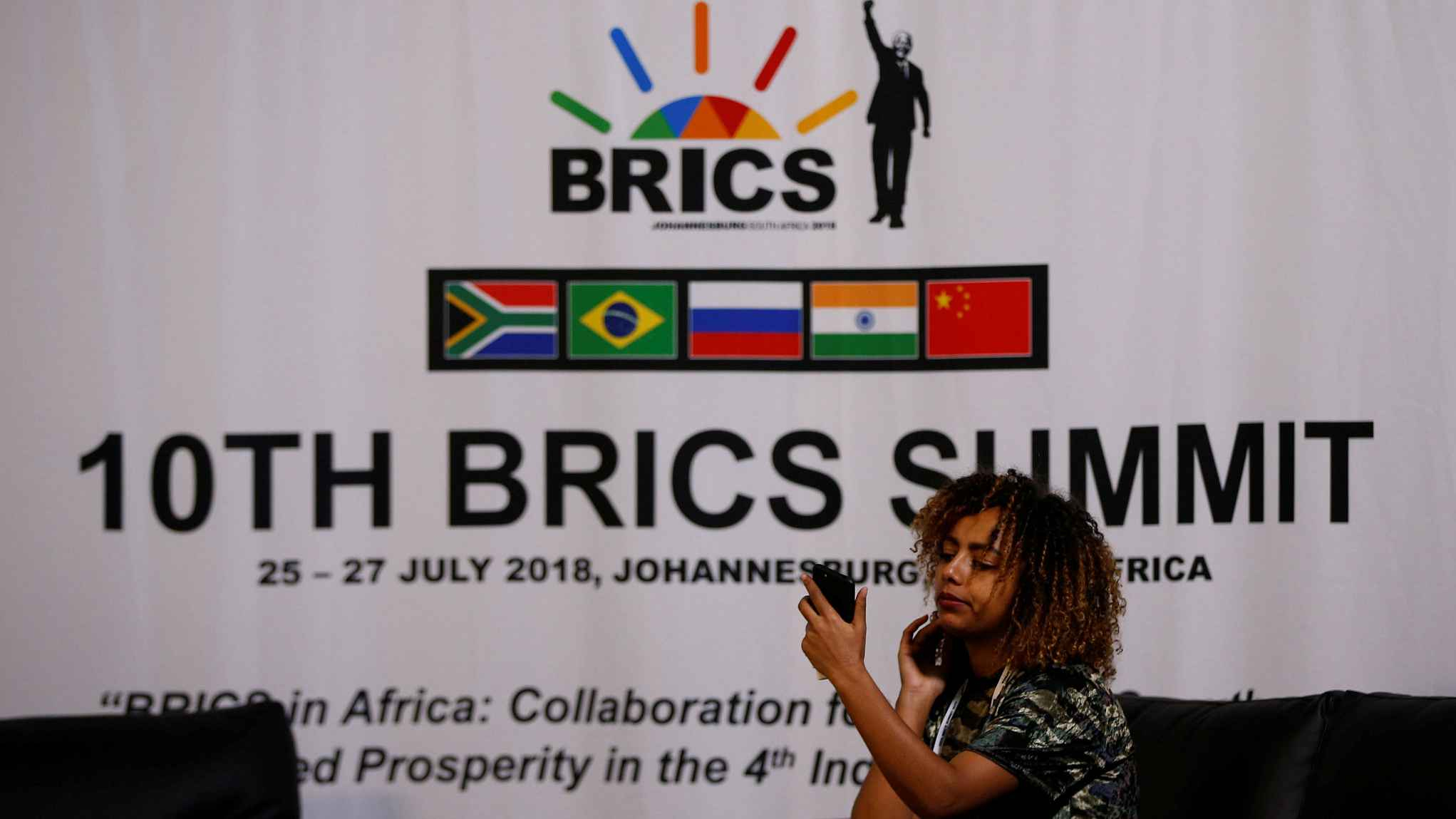Editor’s note: Wang Li is a professor at Jilin University. The article reflects the author’s opinion, and not necessarily the views of CGTN.
As scheduled, the 10th BRICS summit starts on July 25 in South Africa. Chinese President Xi Jinping alongside the leaders of Russia, India, Brazil and the host country—South Africa—will meet and discuss the issues of global and regional interest.
According to statistics, in 2017, the BRICS countries accounted for 23 percent of the world economy and 16 percent of all world trade, in addition to contributing more than half of all global economic growth.
Now, as it enters the second decade of cooperation, BRICS aims to enhance intra-bloc cooperation covering all economic, political and security cooperation as well as cultural and people-to-people exchanges. Can the BRICS members stand together in international affairs?
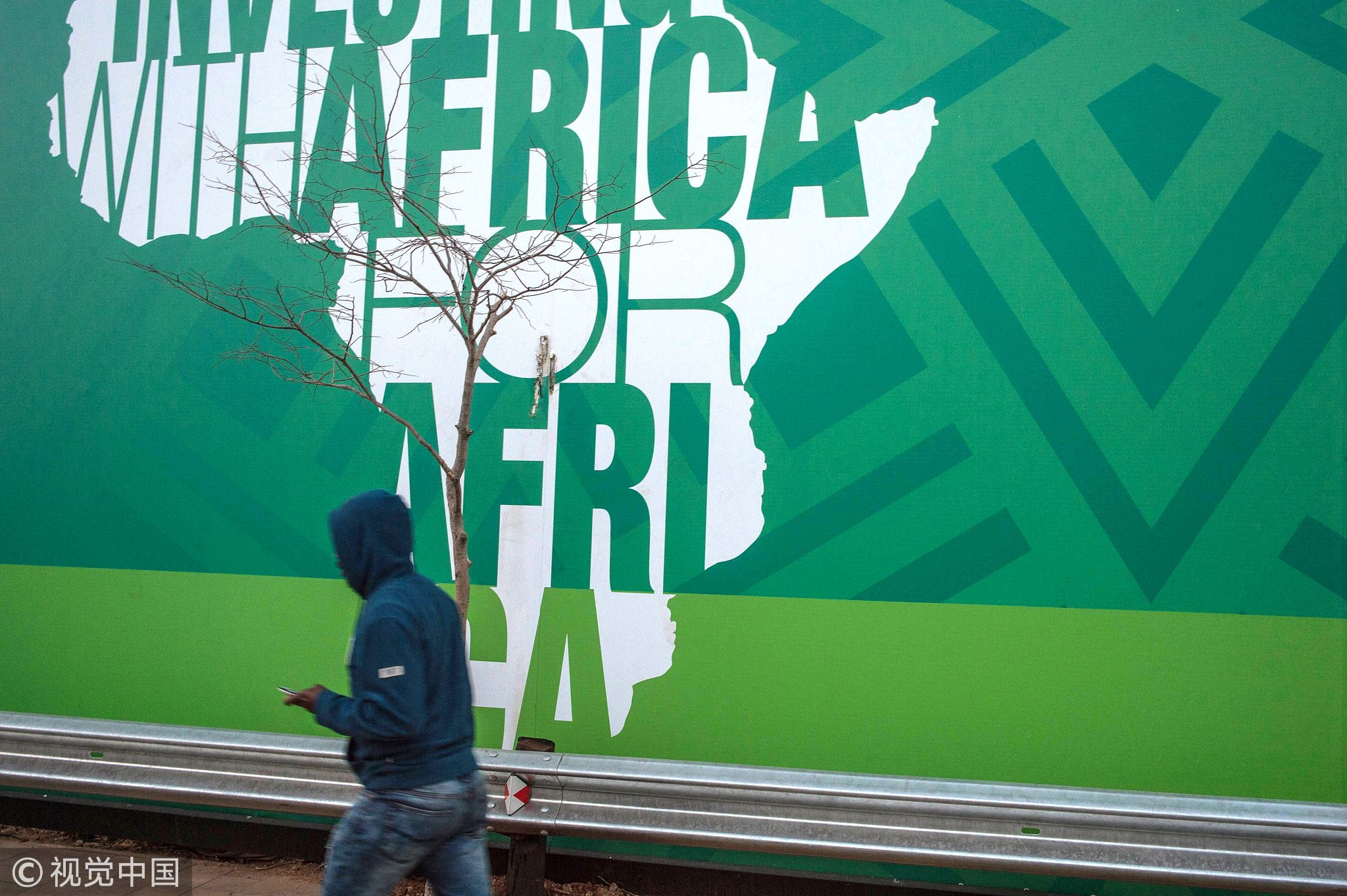
A man walks by a billboard in the Sandton district of Johannesburg on July 25, 2018, ahead of the first day of the 10th BRICS summit taking place in Sandton Convention Center. /VCG Photo.
A man walks by a billboard in the Sandton district of Johannesburg on July 25, 2018, ahead of the first day of the 10th BRICS summit taking place in Sandton Convention Center. /VCG Photo.
The concept of the “BRIC” came to the limelight in 2001. Since then, some have pointed out that the relative size and share of those countries in the world economy has risen exponentially, gradually implying that the G7's economic hegemony is being rearranged.
Scholars like Dominic Wilson further echoed this in his study on “Dreaming with BRICS: The Path to 2050”. He put it that, in all likelihood, by 2025 the bloc could account for over half of the size of the G7 in terms of GDP. And in less than 40 years the BRICS’ economies together could be larger than the G7.
Although it was controversial, the key assumption behind all the discourse is that China and India will rise as the world’s principal suppliers of manufactured goods and services, while Brazil and Russia will become equally dominant as suppliers of raw materials.
In addition, what the BRICS have in common is that they all have an enormous potential consumer market, complemented by access to regional markets and to a large labor force. Wilson argues that three key issues the BRICs have to embrace for their partnership development are as follows: Inclusive growth, sustainable solutions and foreign policy options in the post-Western world.
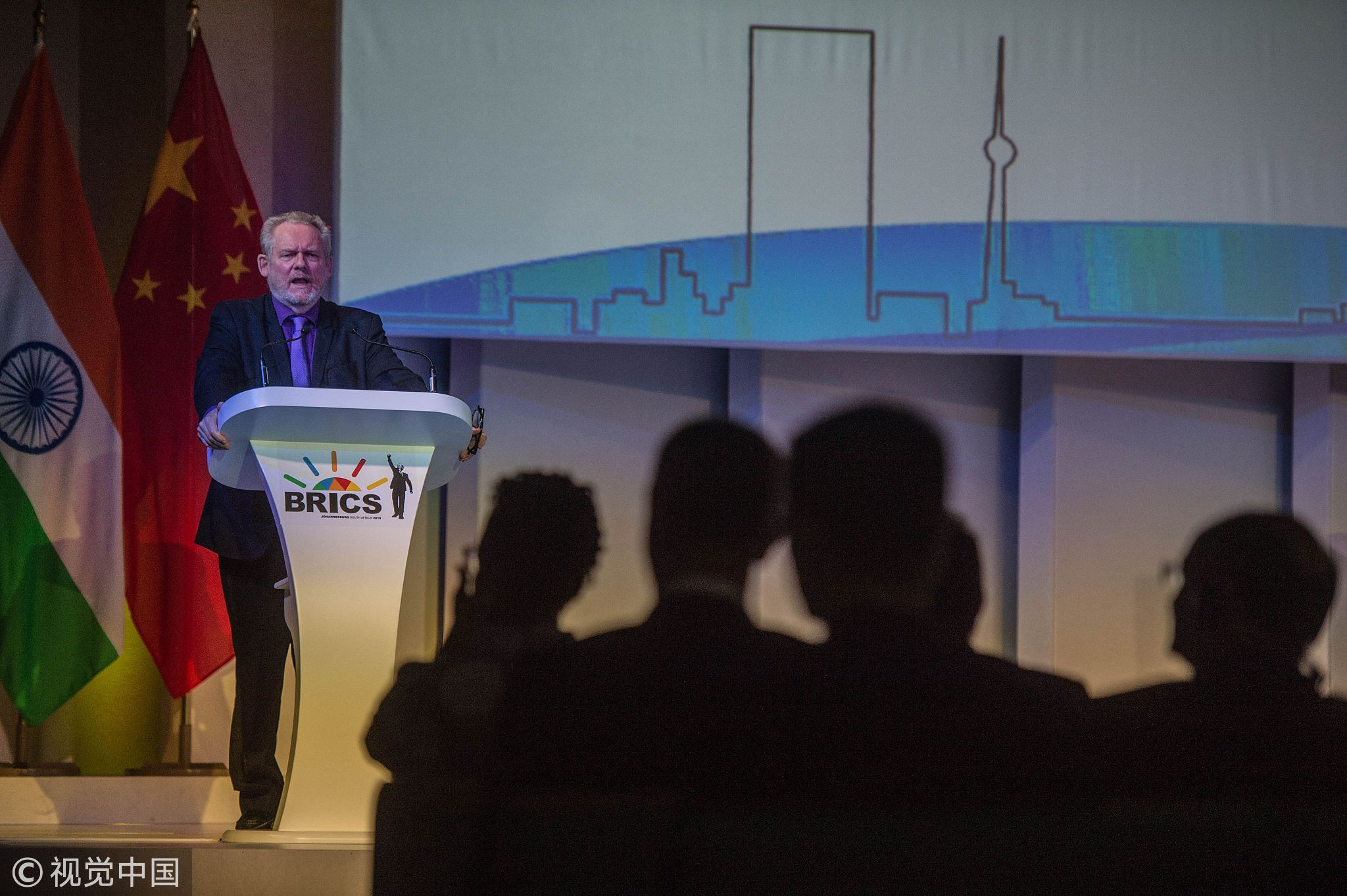
Trade and Industry Minister Rob Davies addresses delegates on the first day of the 10th BRICS summit at Sandton Convention Center, in Sandton district of Johannesburg on July 25, 2018. /VCG Photo.
Trade and Industry Minister Rob Davies addresses delegates on the first day of the 10th BRICS summit at Sandton Convention Center, in Sandton district of Johannesburg on July 25, 2018. /VCG Photo.
China, as the second largest economy in the world, has more expectations on the role played by the emerging powerhouses. During the 2017 G20 Summit in Germany, the leaders of the BRICS held an informal meeting reaching key agreements on building an open world economy and improving global economic governance.
At that time, President Xi reiterated that the BRICS itself would establish an open economy, maintain a multilateral trade system and advance inclusive, balanced and win-win economic globalization with a view to making the fruits of economic growth accessible for all people.
Globally, as Andrew Hurrell put it, “Since all the BRICS nations are now members of the G20 which is a major symbol of the structure of global governance, the bargaining power of the BRICS vis-à-vis US-dominated global institutions is inevitably growing.”
There is no doubt that the BRICS countries also have their own internal challenges and external divergences on many issues. The central point of the role of the BRICS in global affairs is not where the world order is now, but where it will be in the near future, say by 2050.
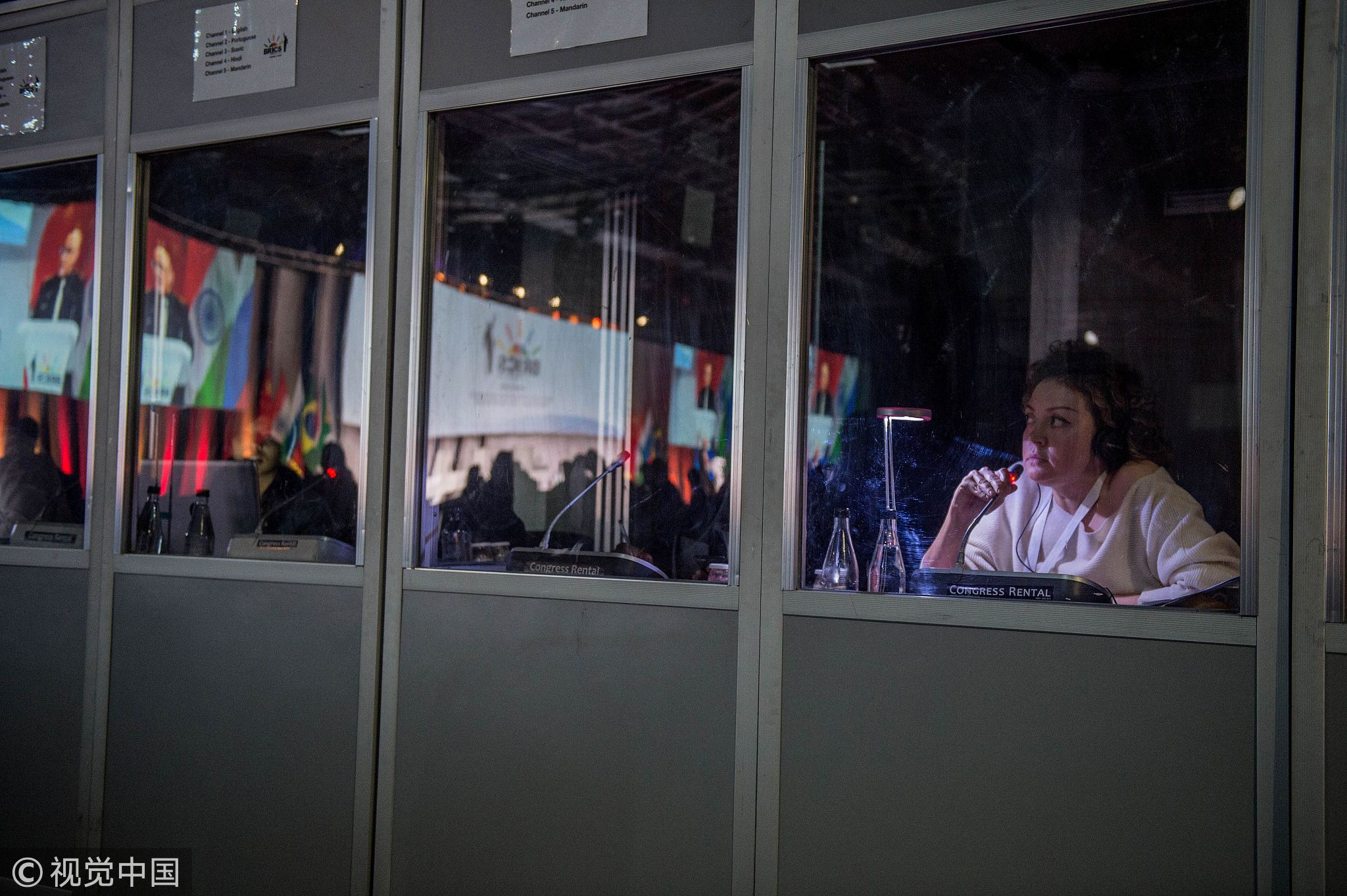
Interpreters translate the address from speakers on the first day of the 10th BRICS summit at Sandton Convention Center, in Sandton district of Johannesburg on July 25, 2018. /VCG Photo.
Interpreters translate the address from speakers on the first day of the 10th BRICS summit at Sandton Convention Center, in Sandton district of Johannesburg on July 25, 2018. /VCG Photo.
Building on the idea that “a shared voice is stronger than a single shout”, the emerging powers realized that they needed to cooperate in order to push forward their own agenda.
Given this, the new forms of multilateralism led by the emerging and regional powers have put the idea of globalism firmly back on the political and intellectual map.
True, all the five countries involved in BRICS have endorsed boosting international economic cooperation and improving global governance, especially enhancing more substantial programs among the BRICS members, such as in multilateral exchanges of culture and education.
Originally, the BRICS has primarily confined itself to economic issues, but political issues are increasingly becoming discussed in the bloc. That being said, global issues like climate change, terrorism, and growing inequality are always high on the agenda of all the governments.

Guests sit in a makeshift studio with a BRICS logo in the background, ahead of the 10th BRICS Summit, in Sandton, South Africa, July 24, 2018. /VCG Photo.
Guests sit in a makeshift studio with a BRICS logo in the background, ahead of the 10th BRICS Summit, in Sandton, South Africa, July 24, 2018. /VCG Photo.
Accordingly, the shared concepts and cooperation have facilitated the BRICS to be more proactive and constructive on international issues ranging from the war on terrorism, and the Israel-Palestine conflict to more topical subjects like Syria, Afghanistan, Africa and the Iranian nuclear question.
The key concern remains how to turn the BRICS into a functional grouping rather than just a global forum.
Strategically, it is vital for the BRICS to become a knowledge base for other developing countries.
They should take up some areas like solar energy, ethanol production, urban landscape development, slum alleviation and biotechnology use, and share their best practices with southern countries.
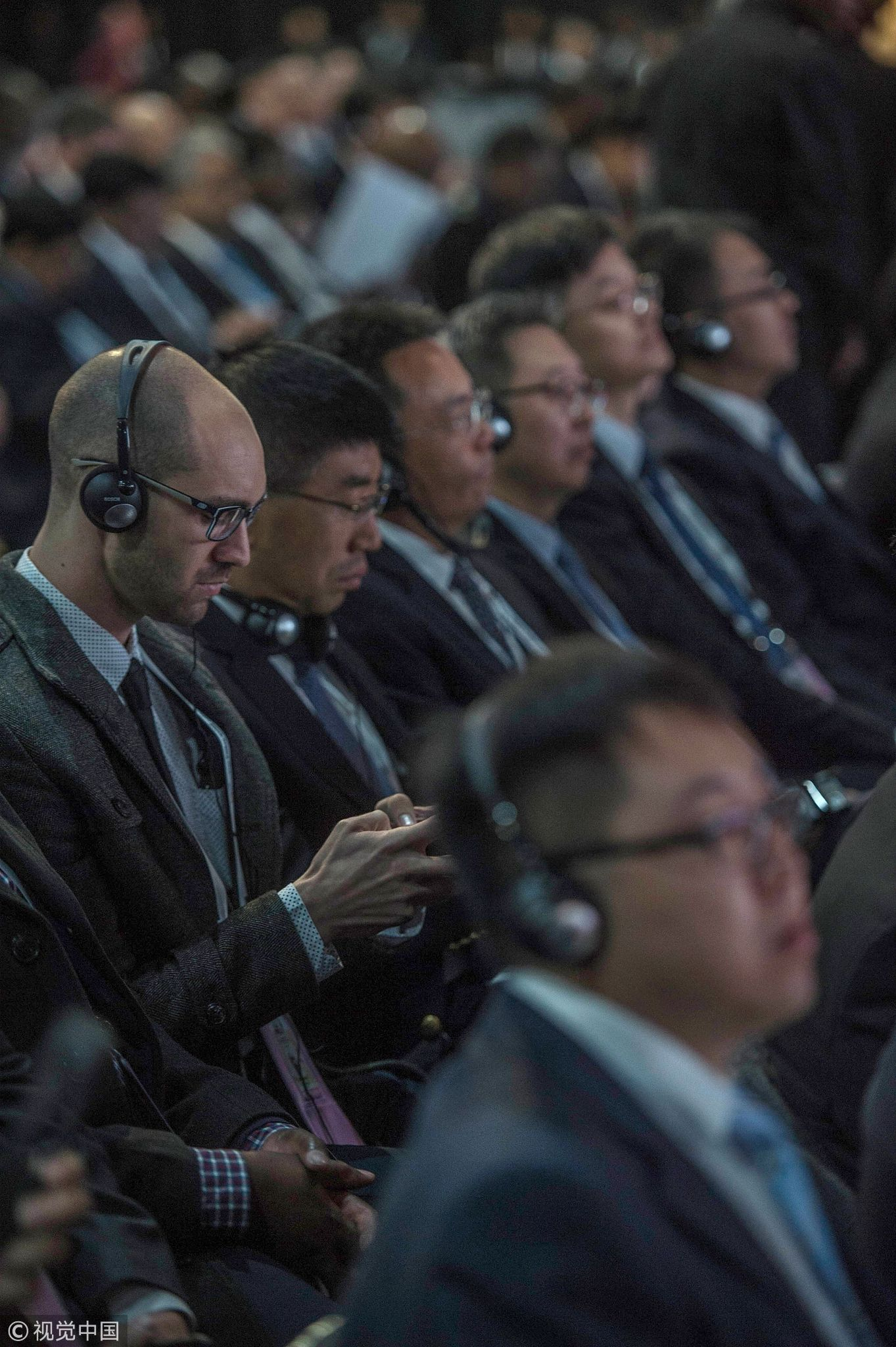
BRICS delegates listen to South African Trade and Industry Minister on the first day of the 10th BRICS summit at Sandton Convention Center, in Sandton district of Johannesburg on July 25, 2018. /VCG Photo.
BRICS delegates listen to South African Trade and Industry Minister on the first day of the 10th BRICS summit at Sandton Convention Center, in Sandton district of Johannesburg on July 25, 2018. /VCG Photo.
Different from the G7 and other Western institutions, which are deemed to retain economic hegemony over the vast developing lands, the BRICS should be committed to multilateralism, human development and social welfare in accordance with UN resolutions.
In sum, the BRICS still has a long way to go in terms of educational and technological innovation, not to mention the hidden concerns of China’s economy towering over the rest of the bloc members, particularly India and Russia.
Yet, they have already advanced in a coordinated and multilateral direction. Disagreements remain but everyone is aware that the BRICS can never break as long as it stands together.

